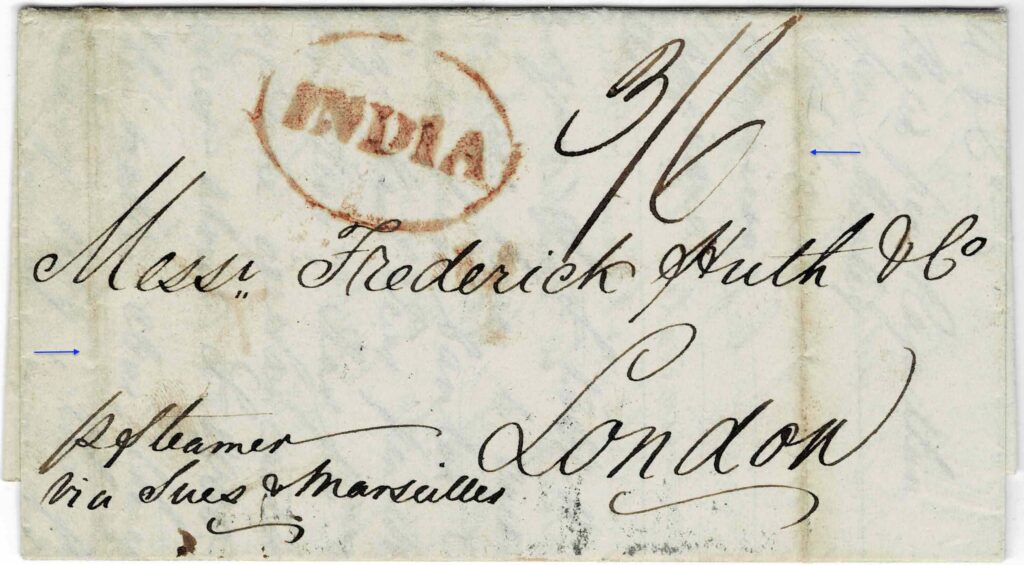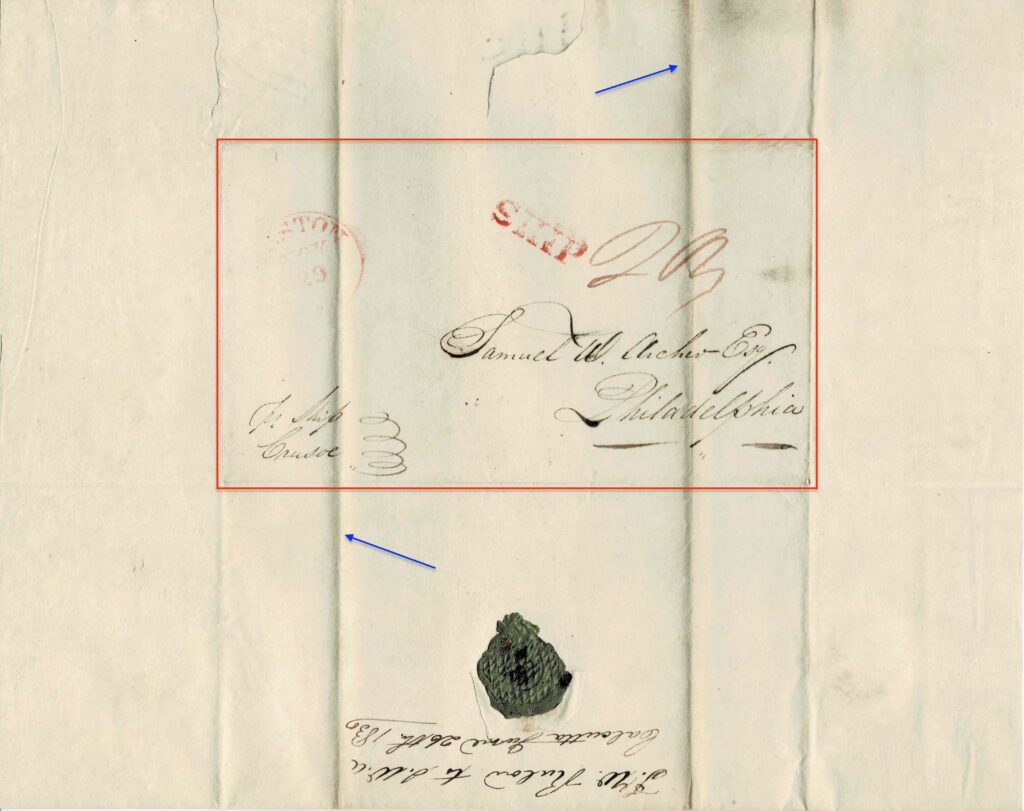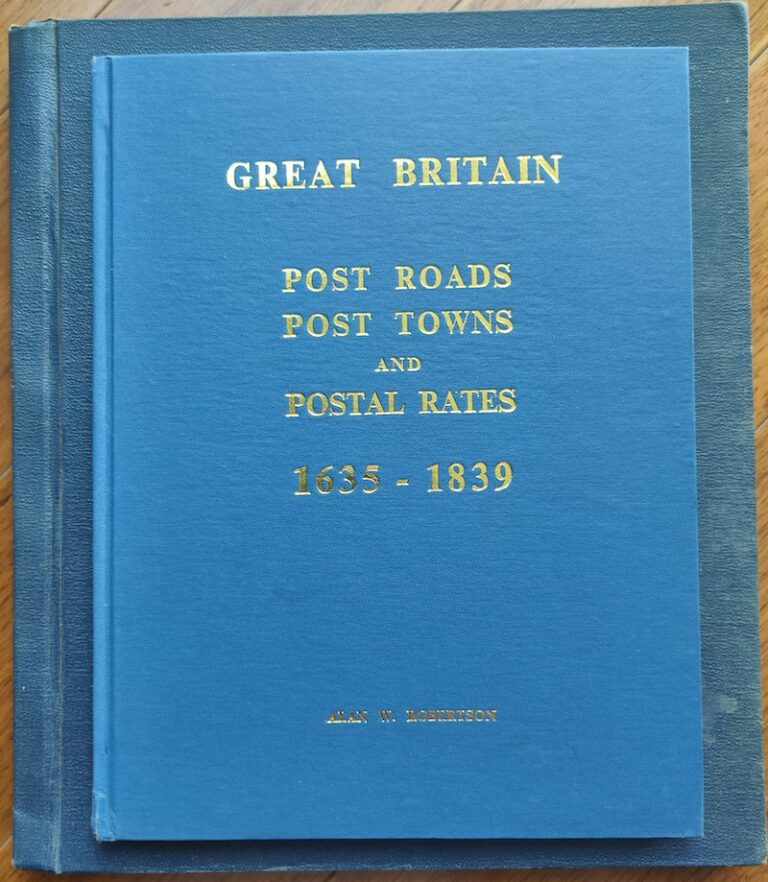Collectors of postal history of the classic period (time prior to mid-19th century) would be no strangers to the ‘entire’ – a letter on paper which, when folded, serves as its own envelope. Before the introduction of postal reforms, starting from Great Britain in late 1839 and thereafter talking hold rapidly across the world, letters were charged by the number of sheets of paper they contained and not by their weight. Hence, envelopes were seldom seen since they would have been counted as one sheet and charged extra.
Folding Letters
Over the centuries, there have been many ways of folding and sealing letters before sending them. A common way of folding, sealing (using a wafer as opposed to wax), and opening an entire is shown in this video.
Anymore fascinated by this area is recommended to look at the Letterlocking channel on YouTube for more ways of folding / locking / sealing letters.
File Folds

‘File folds’ (or filing folds) are different from the folds caused when originally folding entires. Most of the time they cross vertically from top to bottom, many a time across the recipient’s address (Figure 1). They may also be seen horizontally across the middle but that is less common (Figure 2). And sometimes both vertically and horizontally (Figure 3).


Filing or Archiving Letters
File folds are usually visible on the address side of commercial letters, i.e., correspondence between merchants and trading houses. Recipients could more easily ‘file’ and archive their letters by folding them, mostly vertically but sometimes horizontally or both vertically and horizontally, such that they occupied a narrow footprint which enabled compact storage. This would result in file folds.
Merchants would also, as a kind of label, note some or all the following on the outside: the sender’s name, dateline, receipt date, and the date the letter was answered. Called ‘docketing’ or ‘noting’, this enabled easier archiving and retrieval. They would also later prove useful to postal historians in tracing the routing of letters especially if they lack postmarks.
Since these file folds come about from a need to archive a great quantity of letters, private letters sent between individuals are less likely to have them.
Collecting Postal History and File Folds
Collectors surely do not appreciate this kind of archival since the resulting folds detract from the visual appeal of the entire. Depending on how strongly the letter has been folded and its quality, paper fibres break over time, causing tears along the folds. Further those kept in dusty storage conditions will see dirt accumulate around the folds (Figure 4).
On the flip side, it is quite impossible to collect postal history prior to the mid-19th century without a greater or lesser dominance of commercial letters. I would imagine that postal historians are grateful to these merchants of the past for having archived their correspondence so meticulously for decades, many a time for over a century. These archives (which can contain anywhere from a few hundred to tens of thousands of individual letters), when broken up, have reached dealers and collectors, and have helped them form a more complete understanding of the postal history of that period.
A Case Study
Despite being a collector and researcher of Indian international mails of the classic era, I had not paid much attention to how file folds form. I was aware of folds and how they detract from an entire’s appearance. While I knew that cannot not get away from them, I would typically not buy an item with hideously ugly folds (Figure 4) unless it is a space filler or there is something special about it.

Then last week, for the first time ever, I received an entire as originally folded and archived by the receiver i.e., vertically (Figure 5). Most of the time, before coming to a collector, an entire would have passed through the hands of multiple dealers and/or collectors, one (or more) of whom would have refolded it so that it looks as it would have when originally written and despatched.

I needed to do the same. First, I opened the letter completely (Figure 6).

Next, I went about folding the letter back to its original state. This took a few minutes of careful hand manipulation. Over time, the original folds have become much less prominent than the file folds. Further the paper is thick making the folding process just a bit difficult. I carefully folded the paper along the original fold lines and took care to align the wax seal on the rear (an unusual green colour) to its proper place. (Figure 7).


So likely after almost two centuries, the letter has gone back to how it would have looked when it was written on 26 June 1830 by John W. Rulon at Calcutta; and received by Samuel W. Archer in end-November or early December 1830 (unfortunately the date of receipt was not noted when docketing the letter; see Figure 8) at Philadelphia.

Acknowledgement: Thanks to Max Smith for going though the initial draft of this post.







